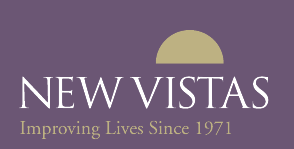Types of Assistance Available for New Mexican Residents Affected by Wildfires
Types of Assistance Available for New Mexican Residents Affected by Wildfires
FEMA assistance for the residents of New Mexico affected by the ongoing wildfires includes a variety of programs. Below is a summary of the types of assistance currently available.
Insurance
Residents with homeowners or renters insurance should contact their insurance provider immediately and begin the claims process. FEMA requires information from your insurance which may include a declaration page, settlement or denial.
Types of Temporary Housing Assistance
Rental Assistance
Financial assistance to pay for alternate temporary housing if a homeowner or renter is displaced from their primary residence because of wildfires in one of the designated counties. This may include renting an apartment, house or staying at a hotel, bed and breakfast or Airbnb.
Lodging Expense Reimbursement (LER)
Reimbursement for out-of-pocket lodging expenses that are not covered by insurance benefits like additional living expenses or loss of use. The resident’s pre-disaster primary residence must be unlivable, inaccessible or affected by an extended disaster-caused utility outage. Eligible expenses may include the cost of the room and taxes charged by a hotel or other lodging provider. This does not include costs for food, phone calls or transportation.
LER is limited to reimbursement and is not provided in advance or in the form of direct payment to a hotel or motel. The costs must have also been incurred on or after April 5, 2022. Residents can upload their receipts to their DisasterAssistance.gov account.
Transitional Sheltering Assistance
Assistance that allows eligible applicants who are unable to live in their primary home to stay temporarily in short- term lodging at a participating hotel or motel, which FEMA pays for directly. Applicants may not request TSA. Those who are eligible will be contacted by FEMA about their eligibility.
TSA-eligible applicants must find and book their own hotel rooms. The list of participating hotels will be posted on
DisasterAssistance.gov under the link femaevachotels.com/.
For New Mexico, the geographic locations will include ONLY those TSA participating hotels in the following counties: Bernalillo, Colfax, Los Alamos, San Miguel, Sandoval, Santa Fe, and Taos.
Home Repair Assistance
Financial assistance to help with uninsured or underinsured home repairs to an owner-occupied primary residence. Types of repairs can include structural parts of a home (e.g., foundation, outside walls, roof) or windows, doors, floors, walls, ceilings and cabinetry. It may also include repair utility systems such as electrical, plumbing and gas systems or for disaster caused damage to items not typically covered by insurance, such as wells, septic systems, access roads, etc. Assistance is limited to the basic needs to make the home safe, sanitary and livable.
Additional Types of Assistance
Other Needs Assistance (ONA)
Financial assistance for other uninsured or underinsured disaster-caused expenses and serious needs such as medical, funeral, childcare, moving and storage expenses or other essential items purchased as a result of the disaster such as generators and chainsaws.
Clean and Sanitize Assistance (CSA)
Financial assistance to eligible applicants who have disaster-caused real property damage, but their home is still livable. CSA is to be used to clean and sanitize their home to help prevent additional losses and protect the health and safety of the household. CSA cannot duplicate benefits of insurance and is limited to a one-time payment of
$300 per household.
Low-Interest Disaster Loans
Small Business Administration (SBA) disaster loans are the primary source of money to pay for repair or replacement costs not fully covered by insurance or other compensation. The SBA offers low-interest disaster loans to businesses of all sizes, most private nonprofit organizations, homeowners and renters.
- Businesses may borrow up to $2 million for any combination of property damage or economic injury. Homeowners may borrow up to $200,000 to repair or replace their primary residence, and homeowners and renters may borrow up to $40,000 to replace personal property.
SBA offers low interest working capital loans called Economic Injury Disaster Loans to small businesses, small businesses engaged in aquaculture and most private, nonprofit organizations of all sizes having difficulty meeting obligations as a result of the disaster.
Apply online using SBA’s secure website at disasterloanassistance.sba.gov/ela/s/. You can contact an SBA customer service representative via email at disastercustomerassistance@sba.gov or by phone at 800-659-2955. SBA will answer specific questions about how a disaster loan may help each New Mexico resident with their disaster recovery and will provide one-on-one assistance in completing applications for these loans.
Applying with FEMA
Residents in one of the counties designated for Individual Assistance can apply for FEMA assistance online
at DisasterAssistance.gov or by telephone at 1-800-621-3362. For those who use a relay service, such as video relay service (VRS), captioned telephone service or others, give FEMA the number for that service. Multilingual operators are available (press 2 for Spanish).
To address many of the common myths and rumors during the New Mexico wildfires, FEMA activated a rumor/myth webpage on the disaster homepage. Visit the FAQ/Rumor page at New Mexico Wildfires DR-4652 Frequently Asked Questions and Rumor Control.
For the latest information on the New Mexico wildfires visit fema.gov/disaster/4652. Follow us on Twitter at twitter.com/FEMARegion6 and like us on Facebook at facebook.com/FEMARegion6/.
